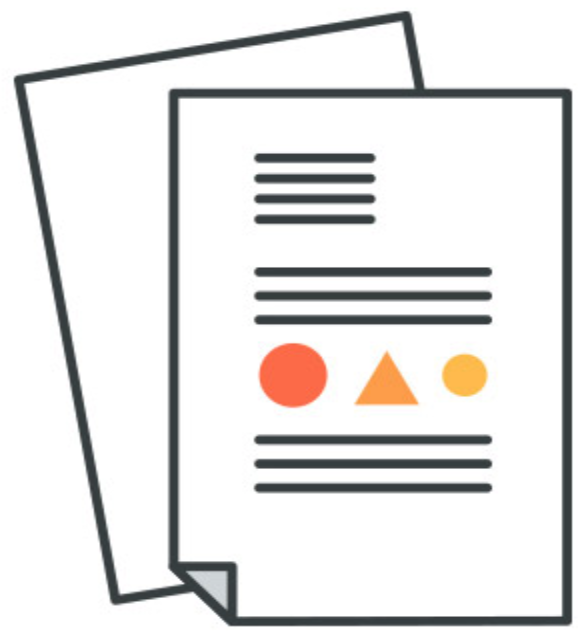Launching a new product is exciting. It signifies that your business is growing and your ideas are coming to life. After you’ve developed your new product it can be tempting to push it out on the market as soon as possible, but this could lead to “product limbo” or a failed launch due to lack of preparation and poor execution.
According to Harvard Business School professor, Clayton Christensen, 30,000 products are launched each year. And every year, 95% of them fail. A separate survey conducted by Gartner declared that 45% of product launches are delayed by at least one month.
For a product launch to be successful, and ideally sell out, there needs to be a strategic marketing plan in place before you launch, which can take some time to draft out. Armed with a well-thought-out marketing plan, you can multiply your sales and boost your conversions. Here are a few tips to help you get started on a pre-launch strategy that propels you towards success.
8 tips to drive new product sales
1. Accurately determine your marketing budget
Before you begin selling your product to consumers, you must determine how much your business is willing to spend on marketing. This budget must account for every step of the new product’s introduction including marketing, advertising, MVP testing, and any first sign-up promotions or product discounts. Maybe you want to allocate your current marketing budget to focus strictly on new product spend, or you might wish to increase your budget. Once you’ve determined your range, you can sit down with your marketing team and break it down further into top performing marketing categories.
According to research by Experian…
New businesses generally spend 12% to 20% of their gross revenue on marketing.
This is divided into direct marketing campaign costs such as advertising, SEO, or brand development costs including promotional channels like your website, social media accounts, and blogs. In this calculation, don’t forget to include basic operational costs and the additional time it will take your marketing team to become familiar with everything related to the new product.
2. Gather your content assets
Right when your product is available form the manufacturer, ensure that you have high resolution photos and videos to use leading up to the launch date for everything content-related.
Lay out your editorial calendar to schedule teasers and a countdown leading up to the drop using various formats and channels. To increase excitement, consider adding a countdown to your website and/or do a countdown on social media.
3. Define your target market and ideal customer
A target market is a specific group of people with shared characteristics that a business markets its products or services to. The main reason to define your target market is because concentrating your advertising budget on a clearly defined group will produce better results than spreading it thinly across multiple potential target groups.
Depending on what your new product is, it may align with who your current audience is, but even then, there are ways that you can get even more specific. Of course, not everyone who buys your products will fit the same profile, but you should have a core customer base in mind when launching a new product.
To determine your target market take a look at the following:
- Check out your competition
- Look at your current customer base
- Analyze your new product
- Select specific demographics
Once you’ve gathered your data you should be able to condense it into key points and shape your marketing campaigns around your target market. The difference between a target market and an ideal customer is simply that your target market is a particular group of people whereas your ideal customer is a description of the kind of customer who would benefit the most from your offering and provide the most value to you in return. Understanding both will bring value in finding people who are interested in your new product.
4. Collect pre-launch reviews and consider feedback in beta testing
As soon as your new product is available from the manufacturer, start collecting product reviews. This gives you testimonials to share upon launching and direct feedback on the product that you can perfect in beta testing stages before making it available.
To gather pre-launch reviews and feedback, you can do this by selecting a very small fraction of your audience - perhaps a few of your current VIP members in your target market - and sending your product or a small sample (if applicable) with the agreement that they will send their feedback or a genuine customer testimonial in return. Ideally, it would be best to gather user-generated videos that you could turn into advertisement or social posts upon launch.
User-generated content works because it is relatable and allows people to connect with your brand more naturally. When your customers read or watch a testimonial from one of your customers it shows them a real world example of how your new product can benefit them from the perspective of someone who has personally tried the product. It inevitably accrues a community of loyal customers and increases chances of selling out, as your customers won’t want to miss out on this new product.
5. Build anticipation and draw out the suspense across channels
There are many ways that you communicate with your audience. Using all of these channels you should inform consumers that a new product is coming and build anticipation for weeks leading up to your scheduled launch date. Announce to your social media followers and email subscribers that you are launching a new product soon and then continue to draw out the suspense through different teasers, giveaways, brand partnerships, or sneak peaks.
Consider the story of your new product. What problem does it solve? What makes it unique? How can you use this to differentiate yourself from competitors and paint the picture for your audience to prove to them that they need to try your new product.
6. Create a waitlist
When reaching out to your audience, you can also encourage them to sign up for your waitlist. In your announcements to your social media followers and email subscribers that a new product is coming, consider offering the opportunity for them to join a waitlist. You can also share this as the CTA in any advertisements that you publish. When your subscribers or ad viewers click in, they’ll land on a simple opt-in page to join the waitlist. In addition to your suspense-filled content, a waitlist creates buzz around your new launch that further increases excitement and anticipation.
The logistics behind this can be messy, so it’s important to strategize how you’ll be adding new and current subscribers to a segmented waitlist, and then continue to offer them content that is slightly more “secretive” than what you are sharing with other consumers. This will make it worth it for your waitlist audience who has already shown intent to purchase. The goal of creating an email waitlist is so you can communicate with interested consumers more directly (and more affordably) about the launch via email. Then, you can follow the next tip.
7. Offer an early bird sale or pre-orders
Give your waitlist access to your new product a day early, making sure they know that they will be the first to try your new product. You can also offer a discount to your waitlist for those who purchase in the first week of launch, or if you are looking to maximize sales, you can open pre-orders.
Pre-orders give you an edge, allowing you to lock-in more sales. And offering early bird to members of your audience who joined the waitlist will increase your overall CSAT and retention. Chances are, if consumers thoroughly enjoy your product, they will repurchase that product or some of your other products. This also ensures that even before launch date you are maximizing your sales as much as possible.
8. Don’t lose your momentum
Keep in mind that a majority of your audience will need multiple touchpoints to consider your new product. According to SAB…
Every day, there are more than 3.4 billion touchpoints for every consumer in the world.
With so much noise constantly being thrown at consumers, it will take high-quality content that feels genuine and excites your customers enough to get them to engage. You’ll reach a lot of people with your launch, and by focusing on nurturing those leads, you can turn them into repeat customers.
Planning for the holidays
Product launches don’t happen overnight, and neither does a successful marketing campaign. For many businesses, the holiday season is the most profitable period of the year. If you’re considering launching a new product in Q3 or Q4, start your planning as soon as possible to allow adequate time for your team to work out all the kinks. You’ll want to get extremely detailed in every single aspect of your product launch, similar to our above tips, but adjusted in consideration of the holidays and the fact that it’s the busiest purchase season of the year.
New products garner attention and help you to acquire customers. If your specific product makes an excellent gift, the holiday season is the perfect time to roll out a new product with your promotions highly targeted at gifting. Consider a BOGO, offer wrapping, make sure your product is available before/on Black Friday, Small Business Saturday, or Cyber Monday. Ultimately, your holiday product launch should focus on value that you can offer consumers. How can you make purchasing easy for them?
Scale up with Influx
Influx provides a variety of different services designed to scale your business without breaking the bank. Our global teams take advantage of the ‘follow the sun model’ designed to provide efficient, 24/7 support. Our teams are trained in product launches and have the experience required to stay ahead of the game during busy holiday seasons. Browse our support solutions to see how Influx can benefit you!



